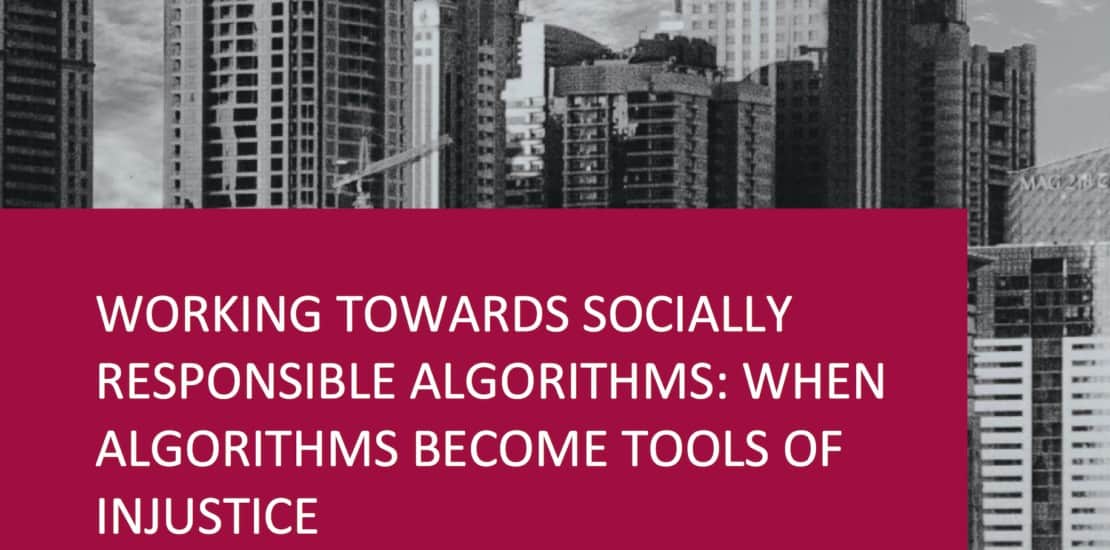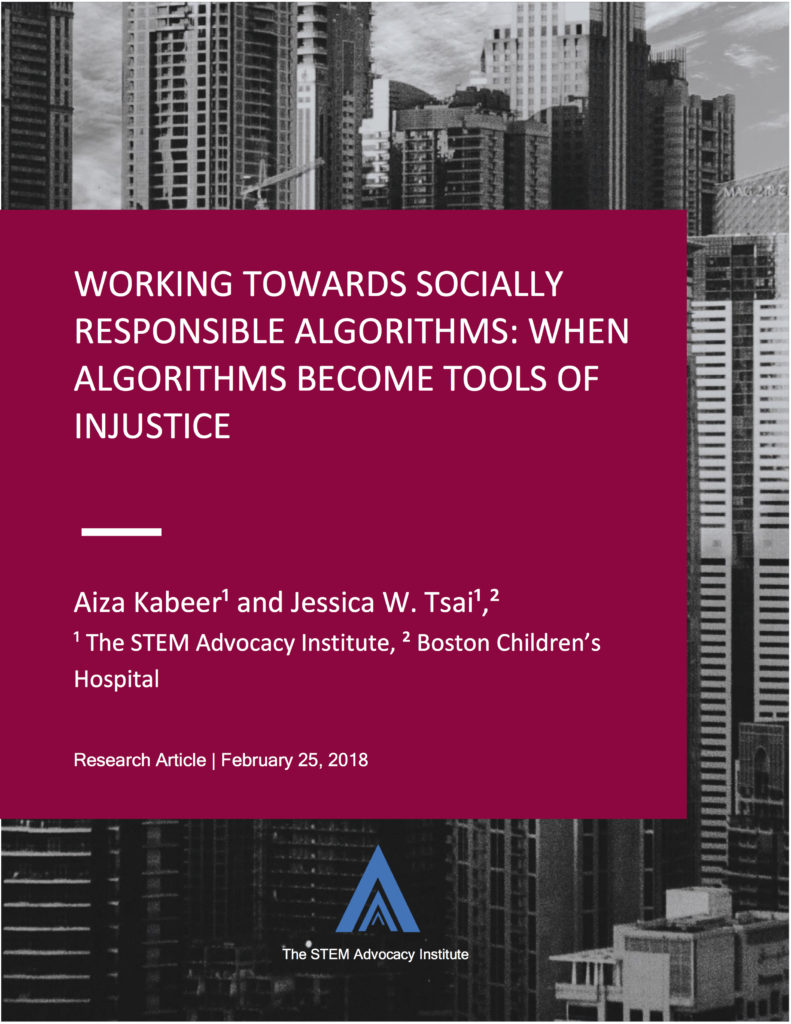- February 25, 2018
- Posted by: Team SAi
- Categories: Article, Research

by Aiza Kabeer, BS (Research Fellow) and Jessica W. Tsai, MD/PhD (Co Director)
Abstract
From criminal justice to financial markets, algorithms are now embedded in the fabric of our society. While algorithms benefit humanity, they can also result in discrimination and reinforce injustice. This article begins by defining algorithms and several types of algorithmic bias. The ways in which algorithmic bias can affect society are described. Potential solutions are discussed including further research, diversity initiatives, and education. Changes in education include changes to existing undergraduate computer science curricula as well as workshops or trainings in the tech industry. Beyond these solutions, policy measures will also be necessary for long-lasting change. Algorithmic bias is a serious danger to society. Algorithms are essential to the world as we know it, and we are responsible for the social implications of their use. If we do not prevent them from harming groups susceptible to discrimination, then we are at fault.
What are algorithms and what is algorithmic bias?
An algorithm is code that defines how to do a task by giving a computer instructions. An algorithm takes some input, runs commands, and produces some output.1,2 For example, an algorithm might determine what advertisements are shown to a user on a website. More sophisticated algorithms can be used to automate a decision or make a prediction that a human would otherwise make. Deciding who is eligible for a loan, choosing the best route in Google maps, or making a critical prediction in the justice system might use such algorithms. Algorithms are also used to create artificial intelligence (AI).
Download the article to read more! or read it on Medium.

